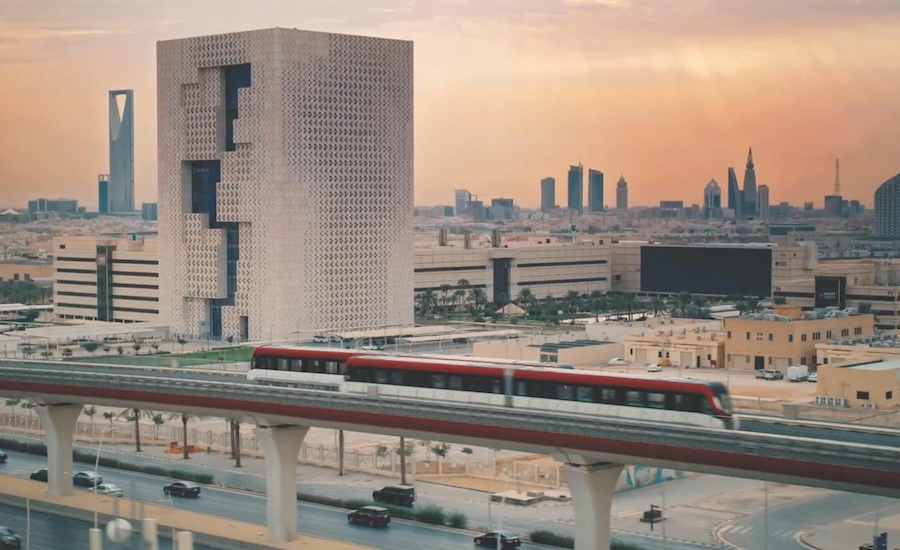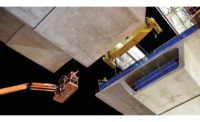Global Consortia Complete Riyadh’s New $25B Metro

A brand-new six-line metro system has opened in the Saudi capital after a decade of construction.
Photo courtesy of the Royal Commission for the City of Riyadh
After a decade of construction, all six lines of a new 176-kilometer, 85-station Riyadh metro rail system have opened, with the final line launched Jan. 5. Three consortia comprised of 19 companies from 13 countries including the U.S., France, Spain, Germany, Japan, South Korea, Canada and the U.K. built the $25-billion electrified system, providing the city with mass transit for the first time.
The Blue, Yellow and Purple lines opened on Dec. 1, followed by the Red and Green Lines two weeks later and the Orange Line this month, according to a press release from the Royal Commission for the City of Riyadh. The system has a capacity for 3.6 million riders.
“It’s the largest metro project in the world to be built in a single phase—and the first to conceive, design and construct six fully integrated lines simultaneously,” said Brendan Bechtel, chairman and CEO of Bechtel, in a company blog. Bechtel was a member of the BACS consortium that includes Almabani General Contractors and Consolidated Contractors Co., which built the Blue and Red lines. “All of this unfolded in Riyadh’s dense urban core, which had to remain open to traffic and fully functional for millions of residents,” Bechtel added.
The two lines entailed building 25 km of viaduct and 19 km of at-grade track, says Michelle de Franca, BACS project director. Line 1 has approximately 17 km of bored tunnel and Line 2 has some 3 km of tunnels built using the New Austrian Tunnelling Method and cut and cover. The biggest challenge was managing groundwater, as there were extensive underground aquifers, she says.
Bechtel noted in his blog that the design team produced over 98,000 drawings and 100 mock-ups. “The system’s doors alone required more than 10,000 unique designs, complete with customized signage and specifications,” he said. “Operators received more than 120,000 as-built drawings and documentation from tens of thousands of lab tests, verifying compliance with nearly 700 material criteria."
Furthermore, de Franca says that “we have over 10,000 doors composed of various materials such as steel, glass, wood, steel mesh and aluminum louvers. These doors come in different types, including swing doors, sliding doors, revolving doors, roller shutter doors and louvered doors. Each door has over 15 or more properties that differentiate it from the others.”
An international competition led to station designs by Zaha Hadid Architects, Snøhetta, Gerber Architekten and Omrania. Zaha Hadid’s design for the 42,000-sq-meter King Abdullah Financial District station includes an iconic lattice design inspired by sand dunes. The five levels within the atrium are supported without columns, using cantilevered trusses and bracing to create an open and flowing internal space, de Franca notes. Crews placed more than 3,000 curved ultra high-performance concrete panels on the outer facade.
The city’s goal is to increase public transport’s share of journeys in the city from a little over 2% to 18% by 2030.


